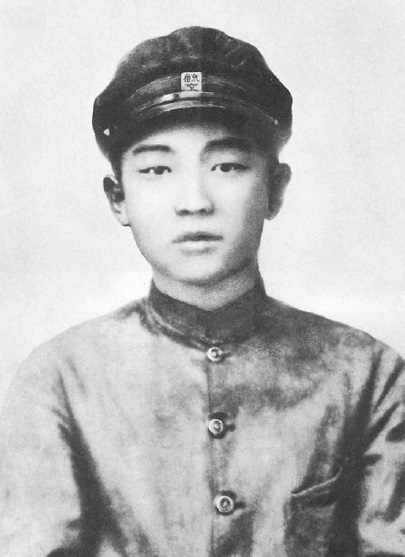|
On The Art Of The Cinema
''On the Art of the Cinema'' () is a 1973 treatise by the North Korean leader Kim Jong Il. It is considered the most authoritative work on North Korean filmmaking. The book sets forth several original theories, which can be applied to the practices of filmmaking, the arts, and beyond. Of these the theory of literature as "humanics" and the "seed theory" are the most important ones. Humanics centers on the question of a good and worthy life. In art, it emphasizes truly independent individuals who are capable of transforming society. The seed theory has become essential to North Korean film theory. It seeks to direct all artistic creation through a single ideological foundation, or "seed". In an individual work, the seed is the synthesis of its subject matter and idea and the basis of its propaganda message. These ideas complement the themes of nationalistic form and socialist content of films. Many ideas presented in the book are justifications for the creation of propaganda ... [...More Info...] [...Related Items...] OR: [Wikipedia] [Google] [Baidu] |
Kim Jong Il
Kim Jong-il (; ; ; born Yuri Irsenovich Kim;, 16 February 1941 – 17 December 2011) was a North Korean politician who was the second supreme leader of North Korea from 1994 to 2011. He led North Korea from the 1994 death of his father Kim Il-sung, the first Supreme Leader, until his own death in 2011, when he was succeeded by his son, Kim Jong-un. In the early 1980s, Kim had become the heir apparent for the leadership of the Democratic People's Republic of Korea (DPRK) and assumed important posts in the party and army organs. Kim succeeded his father and DPRK founder Kim Il-sung, following the elder Kim's death in 1994. Kim was the General Secretary of the Workers' Party of Korea (WPK), WPK Presidium, Chairman of the National Defence Commission (NDC) of North Korea and the Supreme Commander of the Korean People's Army (KPA), the fourth-largest standing army in the world. Kim ruled North Korea as a repressive and totalitarian dictatorship. Kim assumed leadership during ... [...More Info...] [...Related Items...] OR: [Wikipedia] [Google] [Baidu] |
Kim Il Sung
Kim Il-sung (; , ; born Kim Song-ju, ; 15 April 1912 – 8 July 1994) was a North Korean politician and the founder of North Korea, which he ruled from the country's establishment in 1948 until his death in 1994. He held the posts of Premier from 1948 to 1972 and President from 1972 to 1994. He was the leader of the Workers' Party of Korea (WPK) from 1949 to 1994 (titled as Chairman from 1949 to 1966 and as General Secretary after 1966). Coming to power after the end of Japanese rule in 1945, he authorized the invasion of South Korea in 1950, triggering an intervention in defense of South Korea by the United Nations led by the United States. Following the military stalemate in the Korean War, a ceasefire was signed on 27 July 1953. He was the third longest-serving non-royal head of state/government in the 20th century, in office for more than 45 years. Under his leadership, North Korea was established as a socialist state with a centrally planned economy. It had ... [...More Info...] [...Related Items...] OR: [Wikipedia] [Google] [Baidu] |
Film Theory
Film theory is a set of scholarly approaches within the academic discipline of film or cinema studies that began in the 1920s by questioning the formal essential attributes of motion pictures; and that now provides conceptual frameworks for understanding film's relationship to reality, the other arts, individual viewers, and society at large. Film theory is not to be confused with general film criticism, or film history, though these three disciplines interrelate. Although some branches of film theory are derived from linguistics and literary theory, it also originated and overlaps with the philosophy of film. History Early theory, before 1945 French philosopher Henri Bergson's ''Matter and Memory'' (1896) anticipated the development of film theory during the birth of cinema in the early twentieth century. Bergson commented on the need for new ways of thinking about movement, and coined the terms "the movement-image" and "the time-image". However, in his 1906 essay ''L ... [...More Info...] [...Related Items...] OR: [Wikipedia] [Google] [Baidu] |
Soviet Man
The New Soviet man or New Soviet person (russian: новый советский человек ''novy sovetsky chelovek''), as postulated by the ideologists of the Communist Party of the Soviet Union, was an archetype of a person with specific qualities that were said to be emerging as dominant among all citizens of the Soviet Union, irrespective of the country's cultural, ethnic, and linguistic diversity, creating a single Soviet people and Soviet nation. Intent From its roots in the mid 19th and early 20th century, proponents of communism have postulated that within the new society of pure communism and the social conditions therein, a New Man and New Woman would develop with qualities reflecting surrounding circumstances of post-scarcity and unprecedented scientific development. For example, Leon Trotsky Lev Davidovich Bronstein. ( – 21 August 1940), better known as Leon Trotsky; uk, link= no, Лев Давидович Троцький; also transliterated ''Lyev' ... [...More Info...] [...Related Items...] OR: [Wikipedia] [Google] [Baidu] |

